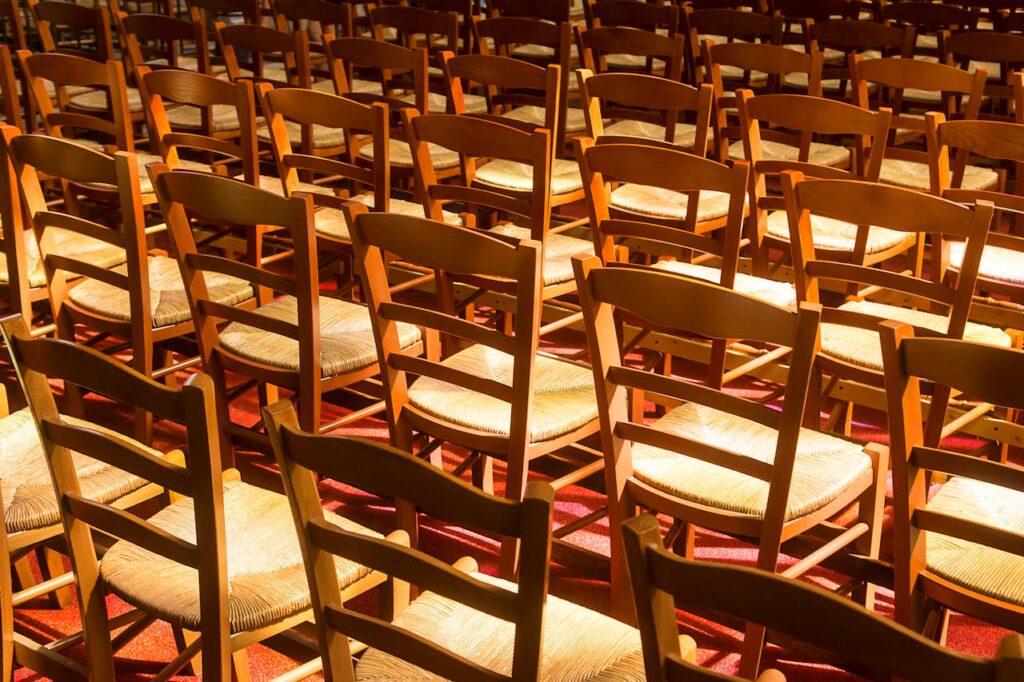I was fortunate today to have my friend Chris Brogan guest lecture virtually in one of my classes. The conversation was so riveting that I both forgot to hit the record button and never snagged a photo (doh!), so I have no proof that this conversation actually took place. You’ll have to just trust me on this one.
But Chris said something during our chat that I’ve heard him say a number of times, but it really stood out to me today:
The difference between an audience and a community is which direction the chairs are pointing.

For several reasons (some of which I’ll be able to share soon!), I’ve been wrestling lately with this idea of community, and how it seems that we’ve lost some of the ability – or maybe the desire? – to create a true sense of community, particularly among content creators.
We used to have in-person networking events. (Remember those?) But ever since the lockdown and the pandemic, ask anyone who runs a networking event about their turnout at classic networking events, whether those are happy hours or otherwise. Their response will likely be that it’s not great. For a number of reasons, we’re just not quite as interested in heading out to meet with other people that we may or may not know, especially if there’s not some sort of explicit value connected to the experience.
The challenge is that we’re also not really getting that true community connection in online spaces, either. We’ve shifted from a world of social media to social media. We’re more interested in creation and consumption than actually connecting with others.
I’ve always championed the idea that creatives in particular need community because it’s really hard to create in a vacuum. It’s tough to not have that sparring partner or someone to help get those creative juices flowing.
As Chris writes, “Community happens when people feel they’re among like-minded others and when they feel their contributions matter.”
So … where are we getting that connection? Are we getting it at all? If we’re not, what can we do differently to regain that sense of belonging? Or do we still need it?
Lots to ponder.

0 Comments